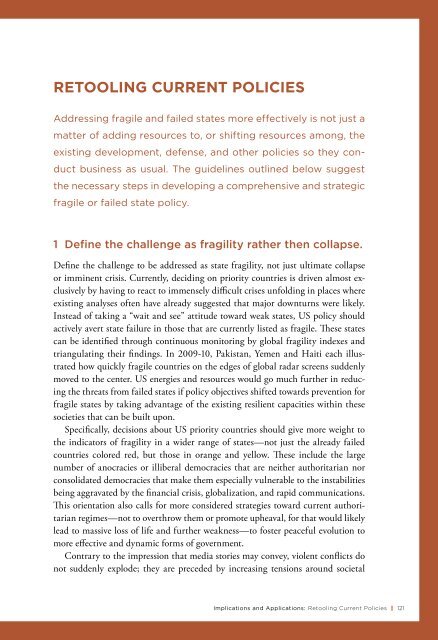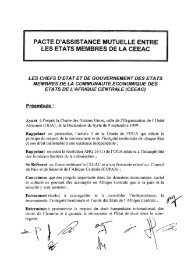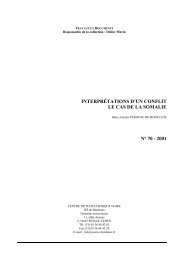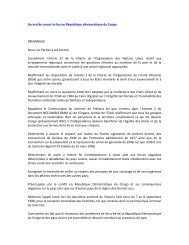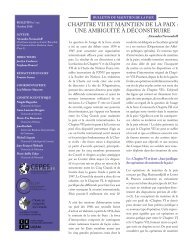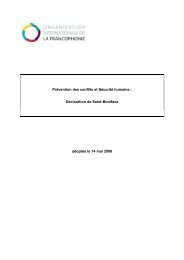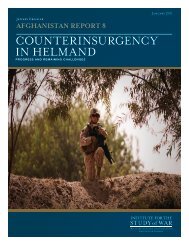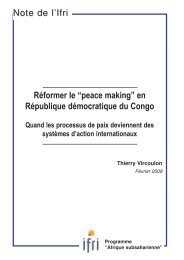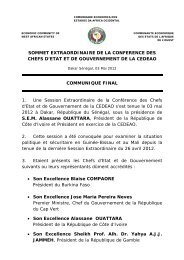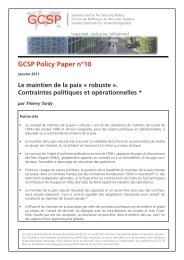engaging fragile states - Woodrow Wilson International Center for ...
engaging fragile states - Woodrow Wilson International Center for ...
engaging fragile states - Woodrow Wilson International Center for ...
Create successful ePaper yourself
Turn your PDF publications into a flip-book with our unique Google optimized e-Paper software.
RETOOLING CURRENT POLICIES<br />
Addressing <strong>fragile</strong> and failed <strong>states</strong> more effectively is not just a<br />
matter of adding resources to, or shifting resources among, the<br />
existing development, defense, and other policies so they conduct<br />
business as usual. The guidelines outlined below suggest<br />
the necessary steps in developing a comprehensive and strategic<br />
<strong>fragile</strong> or failed state policy.<br />
1 Define the challenge as fragility rather then collapse.<br />
Define the challenge to be addressed as state fragility, not just ultimate collapse<br />
or imminent crisis. Currently, deciding on priority countries is driven almost exclusively<br />
by having to react to immensely difficult crises unfolding in places where<br />
existing analyses often have already suggested that major downturns were likely.<br />
Instead of taking a “wait and see” attitude toward weak <strong>states</strong>, US policy should<br />
actively avert state failure in those that are currently listed as <strong>fragile</strong>. These <strong>states</strong><br />
can be identified through continuous monitoring by global fragility indexes and<br />
triangulating their findings. In 2009-10, Pakistan, Yemen and Haiti each illustrated<br />
how quickly <strong>fragile</strong> countries on the edges of global radar screens suddenly<br />
moved to the center. US energies and resources would go much further in reducing<br />
the threats from failed <strong>states</strong> if policy objectives shifted towards prevention <strong>for</strong><br />
<strong>fragile</strong> <strong>states</strong> by taking advantage of the existing resilient capacities within these<br />
societies that can be built upon.<br />
Specifically, decisions about US priority countries should give more weight to<br />
the indicators of fragility in a wider range of <strong>states</strong>—not just the already failed<br />
countries colored red, but those in orange and yellow. These include the large<br />
number of anocracies or illiberal democracies that are neither authoritarian nor<br />
consolidated democracies that make them especially vulnerable to the instabilities<br />
being aggravated by the financial crisis, globalization, and rapid communications.<br />
This orientation also calls <strong>for</strong> more considered strategies toward current authoritarian<br />
regimes—not to overthrow them or promote upheaval, <strong>for</strong> that would likely<br />
lead to massive loss of life and further weakness—to foster peaceful evolution to<br />
more effective and dynamic <strong>for</strong>ms of government.<br />
Contrary to the impression that media stories may convey, violent conflicts do<br />
not suddenly explode; they are preceded by increasing tensions around societal<br />
Implications and Applications: Retooling Current Policies | 121


